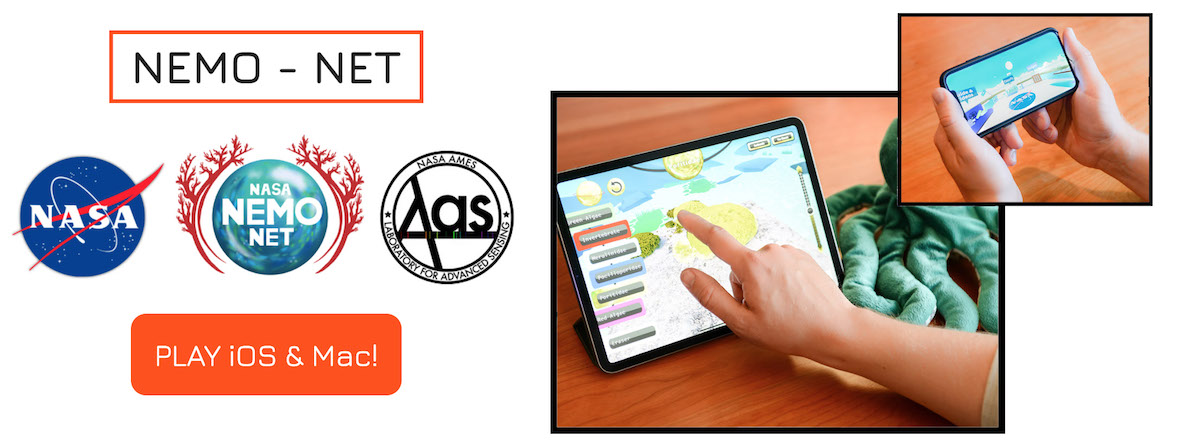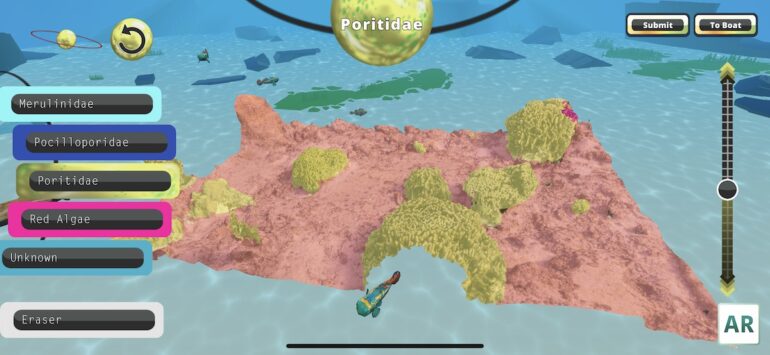NeMO-Net
NeMO-Net is an intelligent, space-aged iOS app, where players help NASA classify coral reefs by painting 3D and 2D images. Data from the game is fed to NASA NeMO-Net, the first neural multi-modal observation and training network for global coral reef assessment.
The NeMO-Net app was released on April 11th and since then nearly 11,000 images have been classified. Data from the game is analyzed by NASA’s Pleiades supercomputer so now YOU can help to classify the health of coral reefs around the world.

New players are asked to choose a username from the most hilarious random name generator and then presented a training session on navigating their new 3D world. You learn novel skills, like painting in 3D to classify benthic elements including corals, algae, substrates, and invertebrates.
As you move through the game new genera of coral are introduced, and badges are rewarded for your contributions. Users can also rate the classifications of other players and level up as they explore and classify coral reefs and other shallow marine environments from all over the world.
Fluid Lensing
Game data are used to train low-resolution data from NASA’s Earth Observing System, to determine coral reef ecosystem makeup globally at an unprecedented scale. Virtual classification is made possible with advanced fluid lensing, a technique capable of removing ocean wave distortion.
Coral reefs remain misrepresented by low-resolution Satalite date because of refractive distortion from ocean waves, and remoteness. Machine learning classification of coral reefs using NASA FluidCam mm-scale 3D data characterizes coral reef percent living cover, morphology type, and species breakdown at the mm, cm, and meter scales.
At a time when coral reefs are experiencing unprecedented anthropogenic pressures, ocean acidification, and sea surface temperature rise, it is now more important than ever to expand our global assessments of coral reefs.
The game is only available on iOS and Mac for now and can be downloaded from the App Store.



